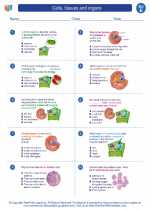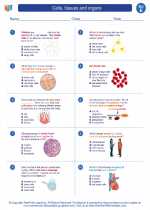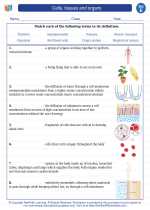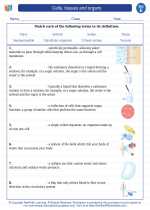Methane
Methane is a chemical compound with the molecular formula CH4. It is a colorless, odorless gas that is the primary component of natural gas. Methane is a potent greenhouse gas and plays a significant role in the Earth's carbon cycle.
Properties of Methane
1. Chemical Formula: CH4
2. Physical State: Gas at room temperature and pressure
3. Odor: Odorless
4. Flammability: Highly flammable
5. Solubility: Insoluble in water
Formation of Methane
Methane is formed through both natural and human-influenced processes.
- Natural Formation: Methane is produced during the decay of organic matter in anaerobic (oxygen-free) environments, such as swamps, marshes, and the digestive systems of animals.
- Human-Influenced Formation: Methane is also produced during the extraction and processing of natural gas, as well as from human activities such as livestock farming and landfills.
Uses of Methane
Methane has several important uses:
- Energy Source: Methane is a primary component of natural gas, which is used as a fuel for heating, cooking, and electricity generation.
- Chemical Feedstock: Methane is used as a feedstock for the production of various chemicals, including hydrogen, ammonia, and methanol.
- Transportation Fuel: Compressed natural gas (CNG) and liquefied natural gas (LNG) derived from methane are used as alternative fuels for vehicles.
Environmental Impact
Methane is a potent greenhouse gas, with a higher global warming potential than carbon dioxide over a 20-year period. Its release into the atmosphere contributes to climate change and global warming. Understanding and managing methane emissions is a critical aspect of addressing climate change.
Study Guide
Here are some key points to remember about methane:
- What is the chemical formula of methane?
- How is methane formed in natural environments?
- What are the primary uses of methane?
- What is the environmental impact of methane?
Understanding methane and its role in the environment is important for addressing climate change and sustainable energy usage.
.◂Science Worksheets and Study Guides Fifth Grade. Cells, tissues and organs

 Worksheet/Answer key
Worksheet/Answer key
 Worksheet/Answer key
Worksheet/Answer key
 Worksheet/Answer key
Worksheet/Answer key
 Vocabulary/Answer key
Vocabulary/Answer key
 Vocabulary/Answer key
Vocabulary/Answer key
 Vocabulary/Answer key
Vocabulary/Answer key
 Vocabulary/Answer key
Vocabulary/Answer key
 Vocabulary/Answer key
Vocabulary/Answer key
 Vocabulary/Answer key
Vocabulary/Answer key
